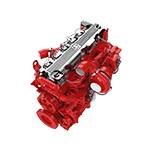Dec . 17, 2024 21:10 Back to list
spray paint brake drums
Spray Painting Brake Drums A Comprehensive Guide
Brake drums play a crucial role in your vehicle's braking system, providing the necessary friction to help bring your car to a stop. Over time, these components can become rusted or discolored, which not only affects the aesthetic appeal of your vehicle but could also lead to potential issues with performance. One effective and cost-efficient method for rejuvenating the appearance of your brake drums is spray painting. In this article, we'll explore the benefits of spray painting brake drums, the materials needed, preparation steps, and the painting process.
Benefits of Spray Painting Brake Drums
1. Cost-Effective Replacing old or rusty brake drums can be expensive. Spray painting allows you to refresh their look without the high cost of replacement.
2. Improves Aesthetic Appeal Rusty or faded brake drums can detract from the overall appearance of your vehicle. A new coat of paint can make a significant difference in how your car looks.
3. Prevents Corrosion High-quality paint acts as a barrier against moisture and contaminants, helping to prevent further rust and damage.
4. Enhances Durability When done correctly, spray painting can provide a durable finish that holds up against heat, chemicals, and the elements.
Materials Needed
Before you start the spray painting process, gather the following materials
- High-Temperature Spray Paint Choose a paint specifically designed for automotive use and capable of withstanding high temperatures. - Sandpaper 120 to 220 grit sandpaper will help smooth the surface. - Brake Cleaner Essential for degreasing the brake drums before painting. - Masking Tape To cover any parts that should not be painted. - Drop Cloth or Newspaper To protect the surrounding area from overspray. - Gloves and Safety Goggles Always prioritize safety while working with chemicals and paint.
Preparation Steps
1. Safety First Before beginning, ensure you're wearing gloves and safety goggles to protect yourself from chemicals and paint fumes.
2. Jack Up the Vehicle Securely elevate the vehicle using a jack and place jack stands for safety. Make sure the vehicle is stable before proceeding.
spray paint brake drums

3. Remove the Wheels Take off the wheel nuts and remove the wheels to access the brake drums.
4. Clean the Brake Drums Use brake cleaner to degrease the drum surfaces. Wear gloves and ventilate the area since the cleaner can emit strong fumes.
5. Sand the Drums Use sandpaper to remove any rust or old paint. This step is crucial for ensuring good paint adhesion. Make sure to clean the surface again after sanding to eliminate dust and debris.
6. Mask Off Surrounding Areas Use masking tape to cover components that should not be painted, such as the wheel hub or backing plate.
The Painting Process
1. Choose a Suitable Location Spray painting should be done in a well-ventilated area, preferably outdoors or in a spray booth. Avoid windy conditions to minimize overspray.
2. Shake the Paint Can Thoroughly shake the can of spray paint for about 1-2 minutes to ensure an even mixture.
3. Test the Spray Pattern Before applying paint to the brake drums, do a test spray on a piece of cardboard to gauge the coverage and spray pattern.
4. Apply the Paint Hold the spray can about 6-12 inches away from the surface. Apply the paint in light, even coats, allowing each layer to dry before adding another. Typically, 2-3 coats are recommended for a smooth finish.
5. Allow to Cure After applying the final coat, let the paint cure as per the manufacturer’s instructions. This may take several hours to a full day.
Reassemble and Enjoy
Once the paint is fully cured, carefully remove the masking tape, reattach the wheels, and lower the vehicle. Your freshly painted brake drums will not only improve the look of your vehicle but will also help protect against future corrosion.
In conclusion, spray painting brake drums is a simple, effective way to enhance your car’s appearance while offering protection against rust. With the right materials and a careful approach, you can achieve results that not only look professional but also help extend the life of your brake components.
-
HINO Industrial Solutions - ¡Ң���ຽ��е��������˾ | Advanced Technology&Reliability
NewsJul.13,2025
-
HINO Industrial Efficiency-Jiangsu Hino Industrial|Productivity Optimization&Cost Reduction
NewsJul.12,2025
-
HINO-¡Ң���ຽ��е��������˾|Advanced Industrial Solutions&Energy Efficiency
NewsJul.12,2025
-
Premium Brake Drum Iveco – Durable Drum Brake Drum & Brake Shoe Solutions
NewsJul.08,2025
-
High-Performance Brake Drum Liza for Enhanced Safety Reliable Drum Brake Drum & Brake Shoe Solutions
NewsJul.08,2025
-
High-Quality Brake Drum MAZ – Durable Drum Brake Drum & Brake Drum and Brake Shoe for Optimal Performance
NewsJul.07,2025
